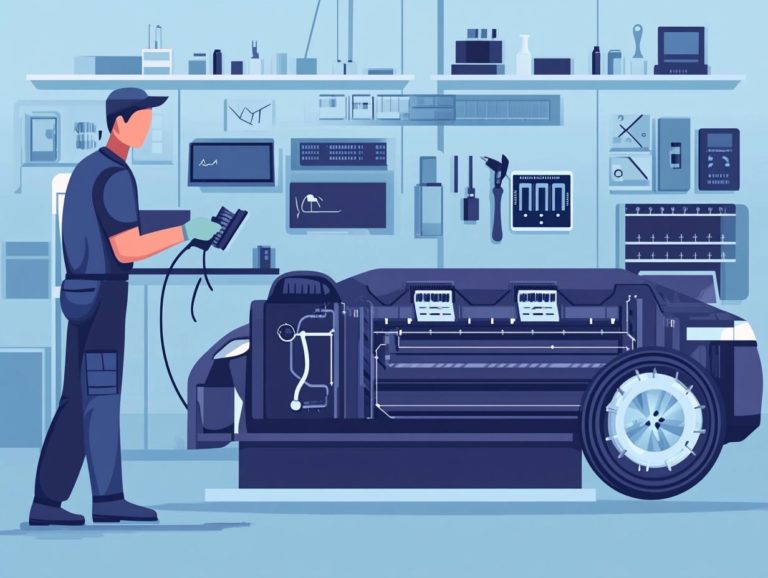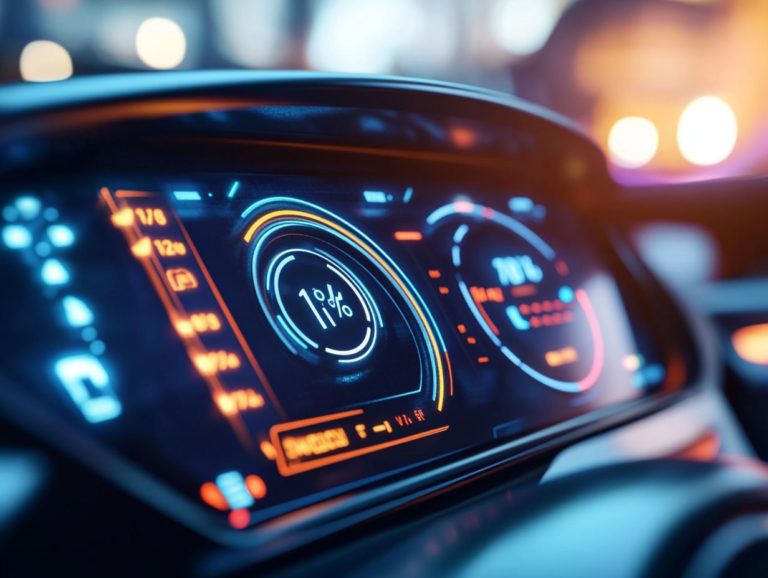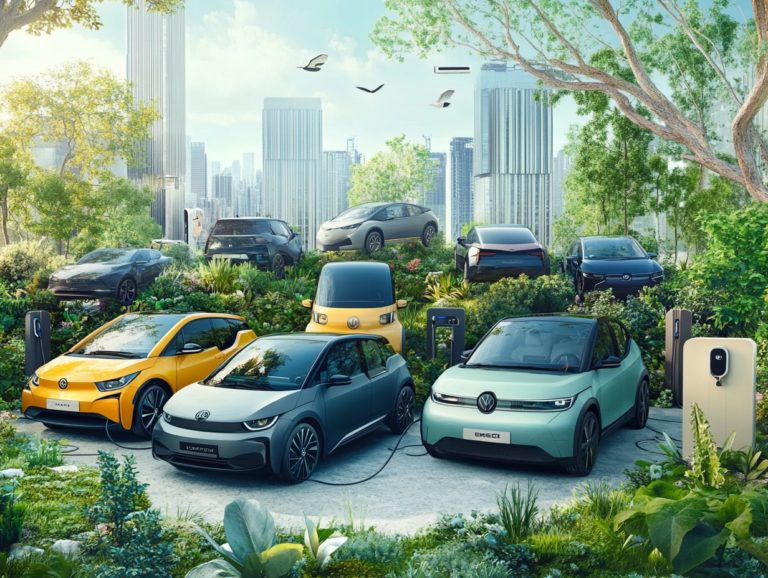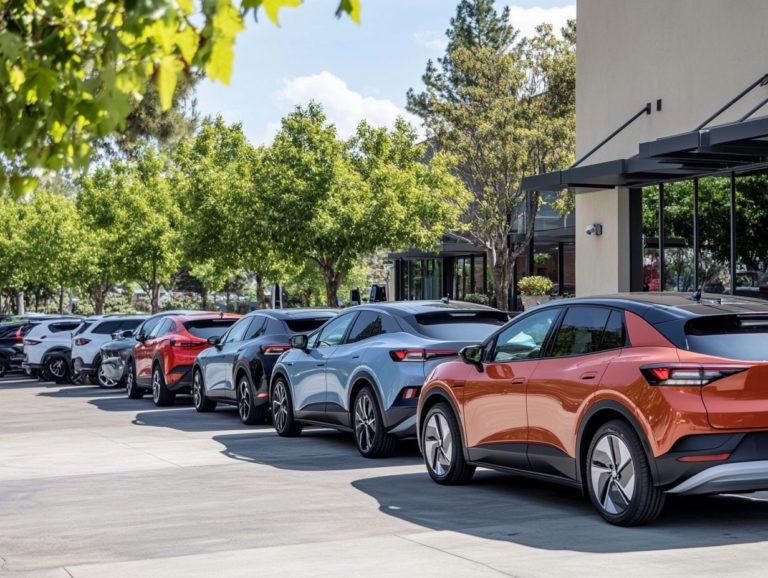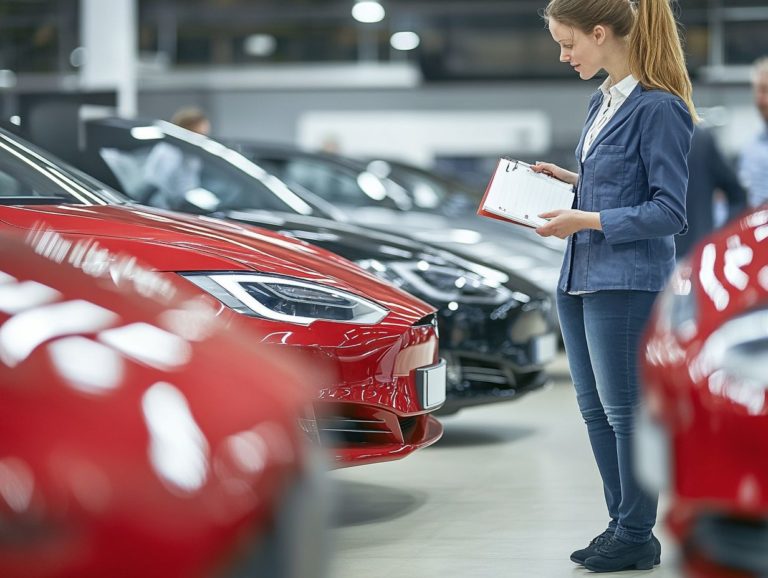what are the best practices for ev charging?
As electric vehicles (EVs) gain popularity, understanding EV charging is essential for you as a driver.
This guide explores the various types of EV charging Level 1, Level 2, and DC Fast Charging helping you identify the best option for your lifestyle. Key factors to consider include location, cost, and efficiency, along with best practices for a smooth and responsible charging experience.
Get excited! Your charging experience is about to reach new heights with thrilling innovations that will change the way you charge your EV!
Contents
- Key Takeaways:
- What is EV Charging?
- Types of EV Charging
- Factors to Consider for EV Charging
- Best Practices for EV Charging
- Exciting Innovations in EV Charging Ahead!
- Frequently Asked Questions
- What are the best practices for EV charging?
- Why is it important to follow manufacturer guidelines for EV charging?
- What is a dedicated charging station and why is it recommended for EV charging?
- Why should frequent fast charging be avoided?
- Why is it advised to keep the battery between 20-80% charge?
- Are there any environmental considerations when charging an EV?
Key Takeaways:
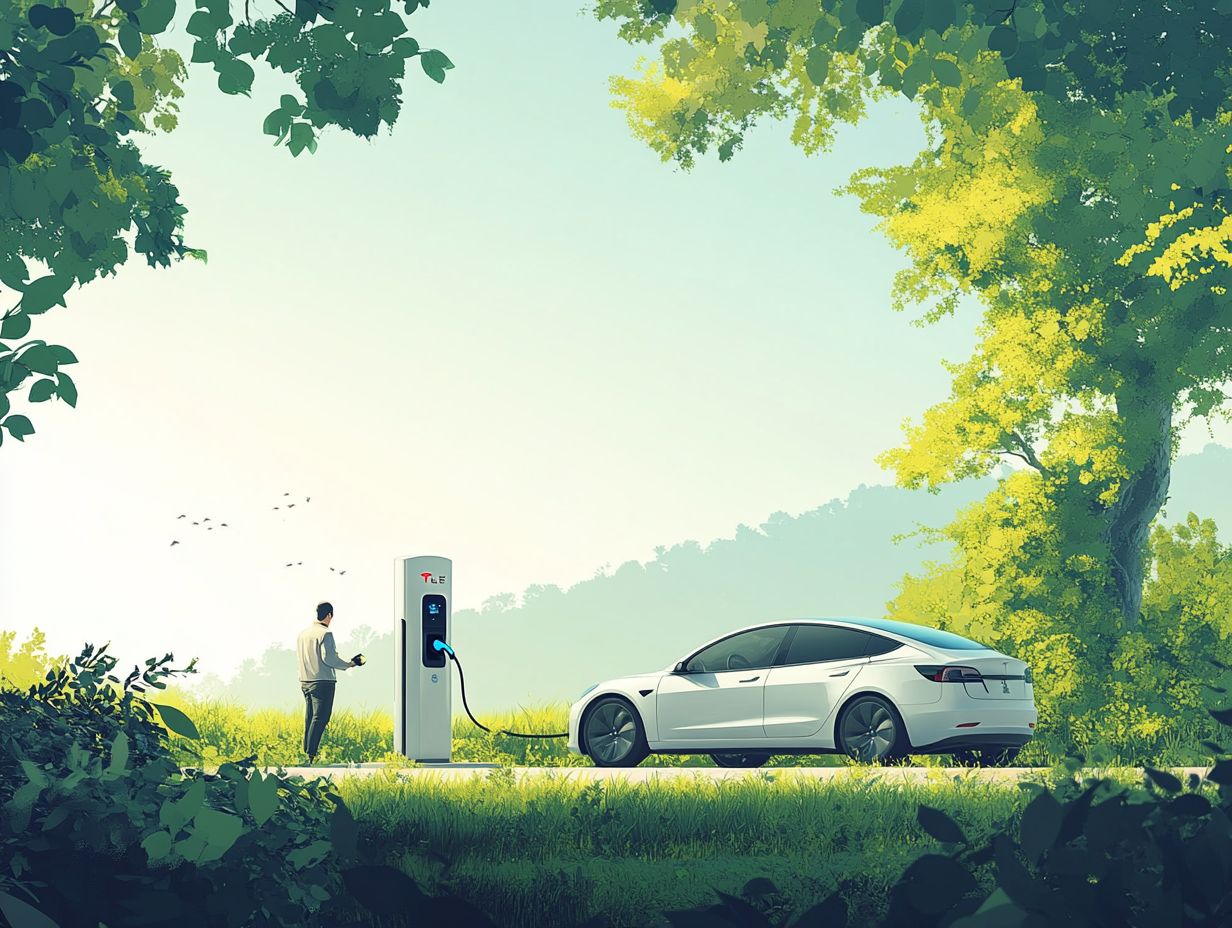
Plan your charging for a smoother ride and less waiting!
Maintain charging etiquette, like sharing charging spots, to ensure fair access for all EV drivers.
With tech advancements, the future of EV charging looks bright, offering faster and more convenient options.
What is EV Charging?
EV charging means replenishing the battery energy of electric vehicles (EVs), primarily using the batteries found in these vehicles.
Charging stations are critical; they convert electrical energy into chemical energy, extending your driving range and enhancing your vehicle’s performance.
As the electric vehicle market grows, understanding EV charging is vital for both sustainability and efficiency.
Types of EV Charging
You have several EV charging methods available, each designed to meet different charging needs. These include:
- Level 1: Standard home outlet charging
- Level 2: Faster charging with dedicated stations
- DC Fast Charging: Rapid charging for quick top-ups
Each type uses distinct equipment to ensure efficiency and convenience.
Level 1 Charging
Level 1 Charging is the simplest and most budget-friendly way to recharge electric vehicles, typically using a standard household outlet that delivers 120 volts. It’s accessible in most homes.
While convenient, the charging speed is slower. Most drivers find it suitable for daily use, especially if their mileage needs are modest.
It can take around 8 to 12 hours to fully charge an electric vehicle, which may not suit everyone. On the other hand, Level 1 Charging is gentle on your battery’s health, allowing for a gradual energy flow that helps maintain and extend battery life.
If you need quicker turnaround times for longer journeys, consider exploring faster charging options.
Level 2 Charging
Level 2 Charging offers a highly efficient way to replenish your electric vehicle’s battery. With a dedicated charging station operating at 240 volts, you’ll enjoy significantly reduced charging times compared to Level 1 Charging.
This faster turnaround is especially beneficial for daily commuters or those with packed schedules.
By installing dedicated charging stations at home or public places, you can boost your vehicle’s battery performance and lifespan. These stations enhance charging speed and stabilize the electrical flow, minimizing battery wear and tear.
You ll spend less time waiting for a charge and more time enjoying the open road, making your electric vehicle ownership experience more convenient and efficient.
Ready to charge? Find a station near you and hit the road!
DC Fast Charging
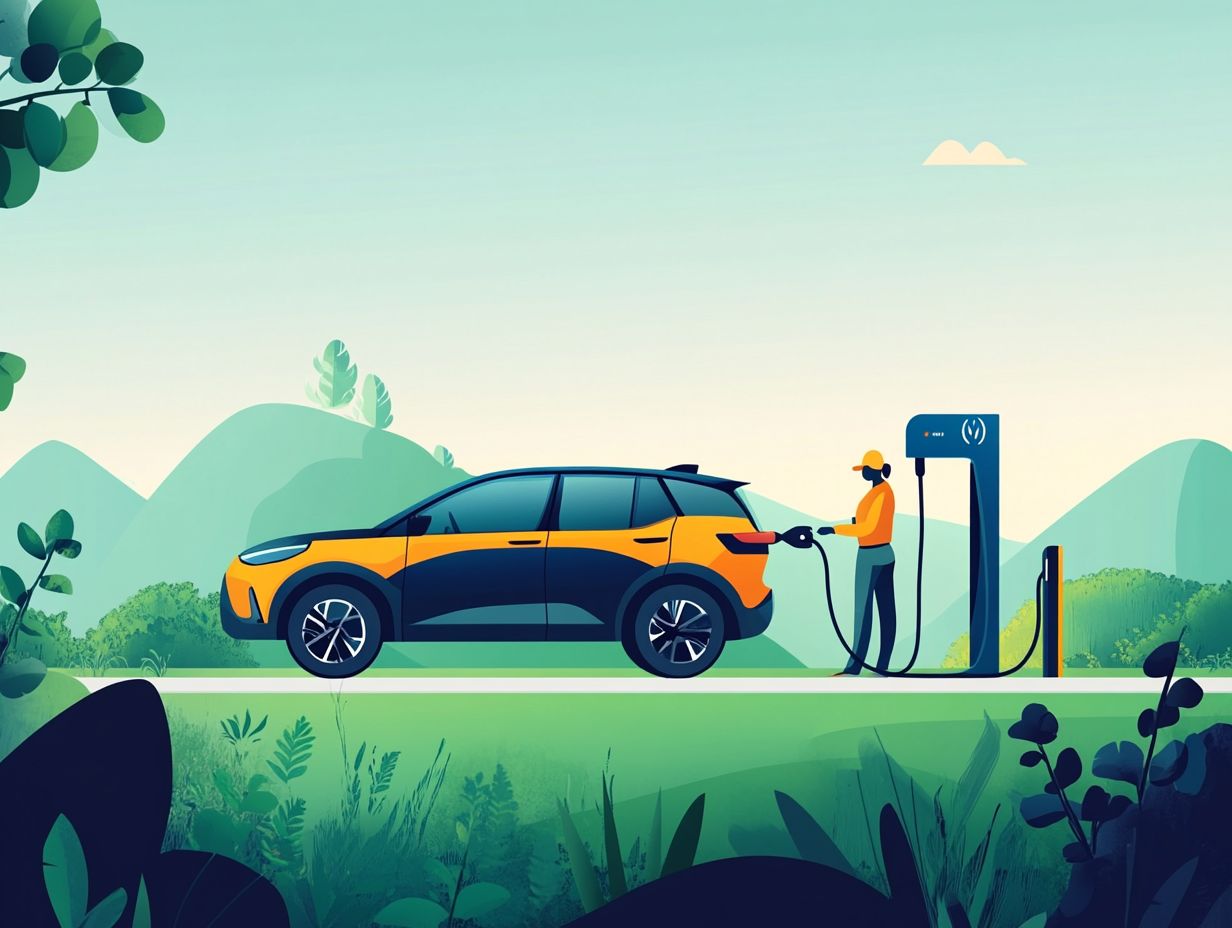
DC Fast Charging is the top choice for quick charging of most electric vehicles. It uses advanced charging stations that convert alternating current (AC) to direct current (DC) power. This allows you to recharge a significant portion of your battery in just a few minutes.
This method is especially useful for long trips, enabling you to recharge swiftly during road journeys. With high-voltage output, these stations can restore a large amount of battery capacity in a short time, making it possible to cover greater distances without long waits.
While the benefits of rapid charging are appealing, it’s also important to consider the drawbacks. Regularly using DC Fast Charging can lead to battery wear over time, as the high currents produce heat that may harm battery health.
Effective heat management strategies are essential to reduce these risks and prolong the life of your vehicle’s battery system.
Factors to Consider for EV Charging
When thinking about EV charging, several important factors need your attention. The location of charging stations, affordable options, and the efficiency of your chosen method all play key roles.
These elements significantly affect battery health and shape your experience as an electric vehicle owner.
Location and Availability
The location and availability of charging stations are vital for electric vehicle owners. Easy access to charging options ensures a smooth driving experience and supports the growing adoption of EVs.
When charging stations are well-positioned in cities, they make daily use of electric vehicles much more convenient. However, rural areas often struggle due to fewer charging facilities.
On the other hand, well-planned public and private charging setups not only improve accessibility but also build a strong network, encouraging more people to choose electric vehicles.
Whether you’re in a busy city or a quiet area, you can easily find charging stations, making your electric vehicle experience hassle-free!
Cost and Efficiency
Cost and efficiency are crucial when selecting the best charging methods for your electric vehicle. Each option you consider can either enhance or restrict your driving range and the overall affordability of owning an EV.
Choosing between home charging, public stations, or fast chargers has different impacts on both your initial investment and ongoing energy costs. For many, installing a faster charging option for home use may involve higher upfront costs but can lead to savings on energy bills over time.
While public charging might seem cheaper initially, fluctuating prices and possible fees can quickly diminish your savings. It’s essential to thoughtfully assess the initial investment against potential long-term benefits to ensure your choices align with your financial goals and enhance your electric vehicle ownership experience.
Best Practices for EV Charging
By following best practices for EV charging, you can optimize battery health and improve overall performance. For more insights, check out what should I know about EV charging etiquette?
This approach ensures that electric vehicles remain a sustainable and efficient mode of transportation, benefiting both households and businesses. Don t miss out on optimizing your electric vehicle charging experience today!
Planning and Scheduling Charging
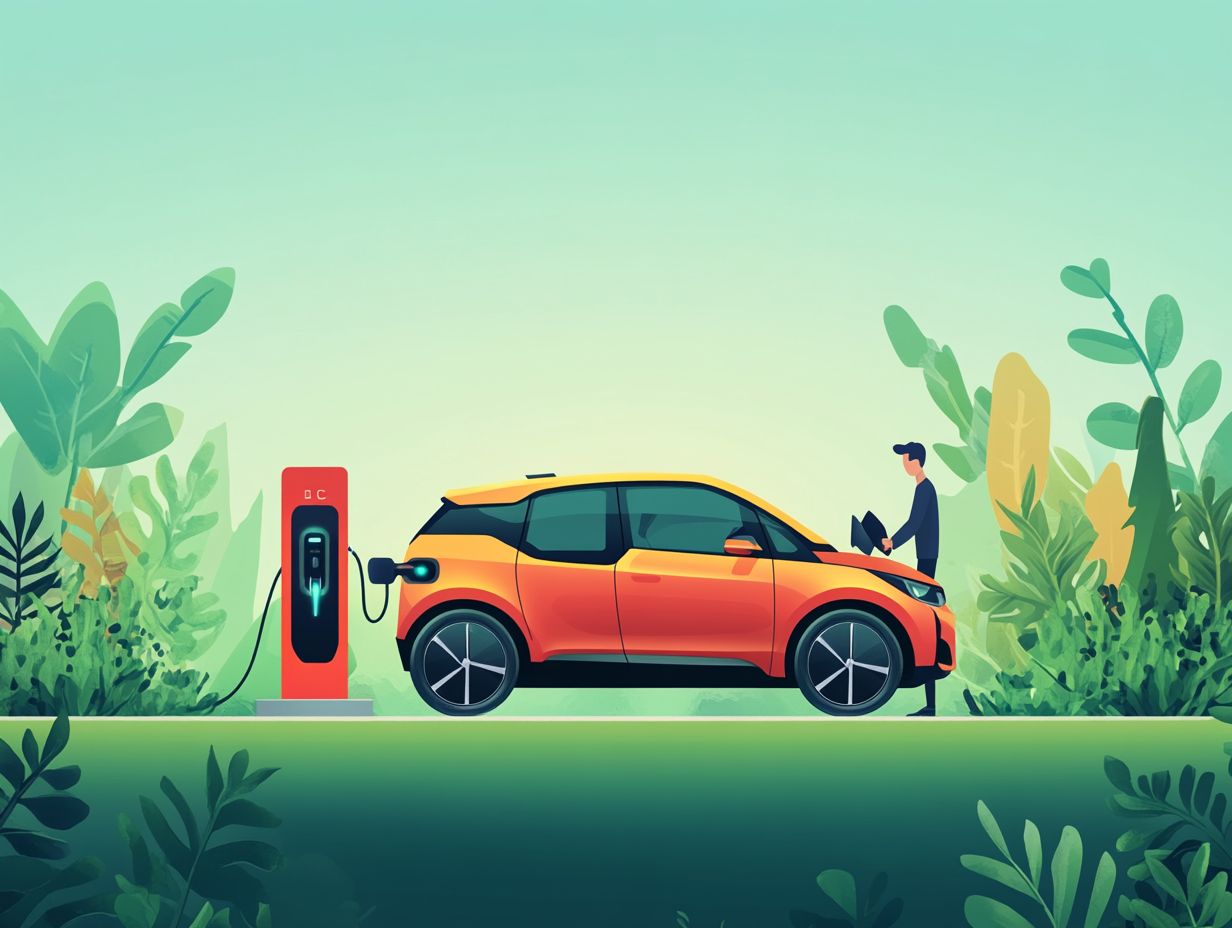
Planning and scheduling your charging sessions with intention can greatly enhance your battery’s health and longevity. This allows you, as an electric vehicle owner, to fine-tune your driving habits and achieve optimal performance.
By syncing your charging with your daily routine perhaps during overnight hours or when energy rates dip you can capitalize on peak energy times while easing the strain on the grid. This mindful approach boosts the efficiency of the charging process and plays a vital role in minimizing battery wear over time.
Understanding the ideal charging windows gives you the power to manage your battery effectively. This ensures your vehicle is always ready for the road without compromising performance.
This proactive strategy benefits you and contributes to a sustainable environment by championing energy efficiency.
Maintaining Proper Charging Etiquette
Maintaining proper charging etiquette is crucial for electric vehicle owners, as it directly impacts battery health and optimizes energy efficiency. It’s also important to understand what to look for in an EV charging plan to ensure a smooth charging experience.
By being mindful of where and when you charge, you can extend your battery’s lifespan and enhance its performance. For example, use charging stations during off-peak hours to reduce wait time and alleviate congestion.
Sharing charging resources with fellow EV drivers fosters a sense of community and encourages considerate behavior. This leads to a more reliable network of charging options.
Avoiding excessive charging can alleviate strain on your battery, supporting its longevity and contributing to a healthier EV ecosystem.
Exciting Innovations in EV Charging Ahead!
Exciting changes are coming to EV charging! With ongoing innovations and advancements in technology, the focus is on enhancing sustainability and efficiency.
This evolution is set to make electric vehicles more accessible and convenient for an expanding consumer base. Embrace the journey ahead as these developments reshape transportation.
Innovations and Advancements
Innovations in EV charging are reshaping the landscape, with smart technology leading the charge. This advancement facilitates more efficient charging stations and enhances the user experience for electric vehicle owners like you.
By integrating cutting-edge solutions such as wireless charging, advanced battery management systems, and seamless connections with solar panel technology, the electric vehicle infrastructure is poised for transformation.
These developments make your life easier and significantly bolster sustainability efforts. Imagine this: you park your vehicle, and it charges automatically, free from the hassle of cumbersome cables. You can also optimize battery performance to extend both lifespan and range.
Pairing charging stations with solar energy taps into a cleaner energy source that reduces your carbon footprint. As these innovations continue to evolve, they pave the way for a more sustainable urban ecosystem that benefits everyone.
Frequently Asked Questions
What are the best practices for EV charging?
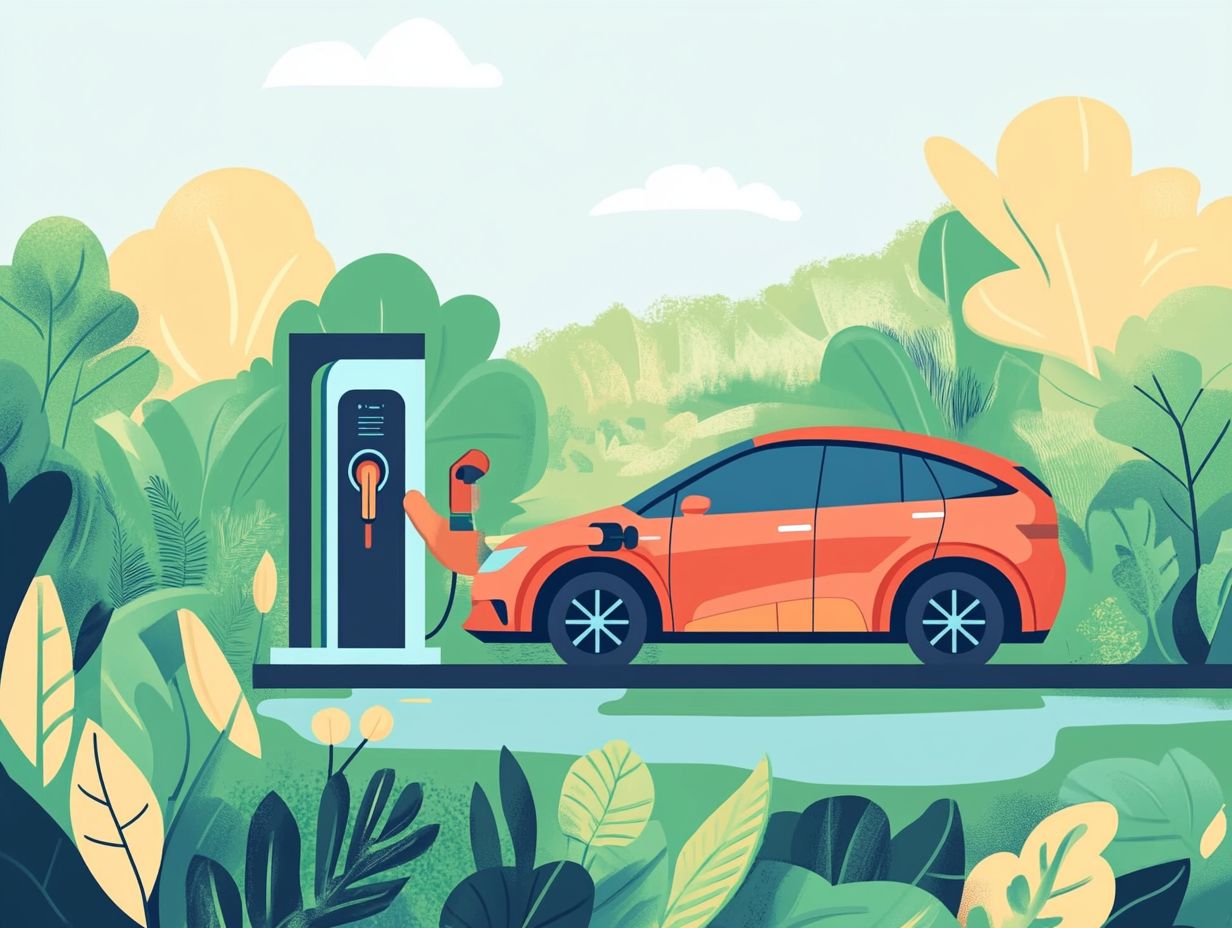
- Follow manufacturer guidelines.
- Use a dedicated charging station.
- Avoid frequent fast charging.
- Keep the battery between 20-80% charge.
Why is it important to follow manufacturer guidelines for EV charging?
Following manufacturer guidelines ensures the safety and longevity of your EV’s battery. Each model may have specific charging requirements that should be followed to avoid potential damage to the battery.
What is a dedicated charging station and why is it recommended for EV charging?
A dedicated charging station is a designated outlet or charging unit specifically for EVs. It is recommended because it provides a reliable and efficient way to charge your vehicle and can prevent overloading of your home’s electrical system.
Start implementing these tips today to enhance your EV experience!
In summary, understanding best practices and innovations in EV charging, including what types of homes are best for EV charging, can significantly improve your electric vehicle experience while contributing to a more sustainable future.
Why should frequent fast charging be avoided?
Frequent fast charging can damage the battery and reduce its lifespan. Use fast charging only when you really need to; regular charging is better for long-term health!
Why is it advised to keep the battery between 20-80% charge?
Keeping the battery between 20% and 80% helps it last longer. Charging it fully or letting it drain completely can stress the battery and shorten its life.
Are there any environmental considerations when charging an EV?
Yes! Whenever you can, use renewable energy sources like solar or wind power to charge your EV. This reduces your vehicle’s carbon footprint and supports a sustainable future.

